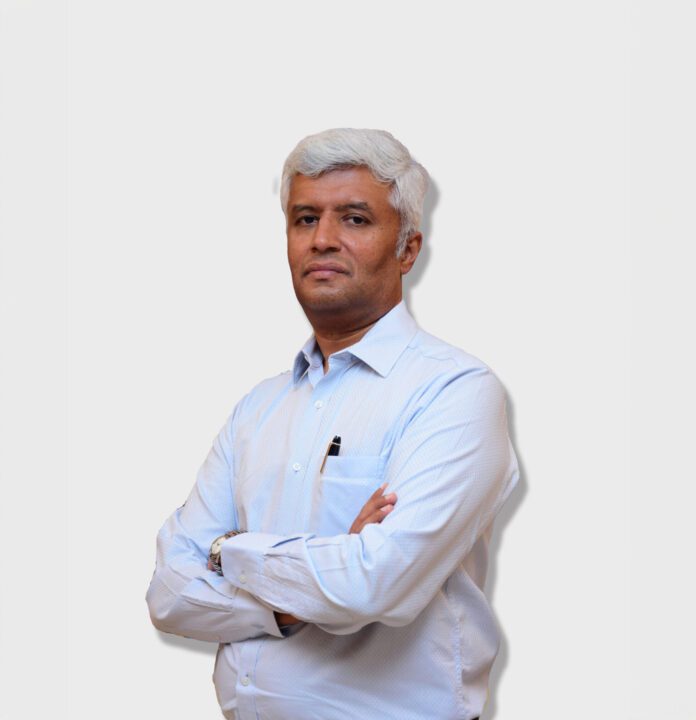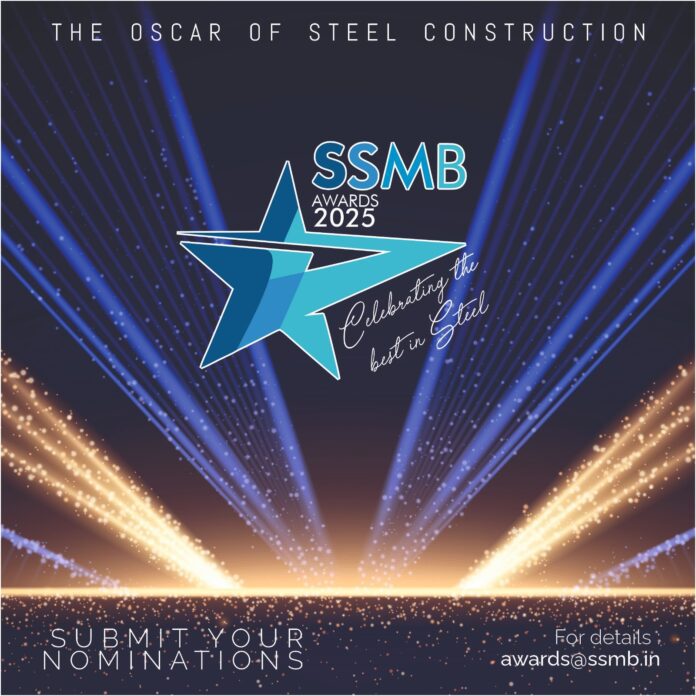Introduction: The story of steel in India is inseparable from the story of structural engineers who have constantly redefined its limits. Among them, Sriprakash Shastry, Partner at Aswathanarayana and Eswara Projects & Consultancy LLP, stands out for his work on large-span industrial projects, seismic design, hybrid systems, and code development. With decades of hands-on experience, Shastry bridges the worlds of practice, academia, and standardisation. He has been instrumental in mentoring young engineers, advising on codal committees, and shaping the dialogue between compliance and creativity in structural design.
In this wide-ranging conversation with SSMB, he reflects on his design philosophy, lessons from signature projects, and the pathways that will shape India’s steel construction journey in the decades ahead.
CODES AND CREATIVITY: NOT MUTUALLY EXCLUSIVE
As a partner at Aswathanarayana and Eswara, you are responsible for ensuring every design meets the relevant codes and standards. How do you strike a balance between strict technical compliance and delivering creative, cost-effective solutions?
Compliance and creativity can, in fact, coexist. The biggest misconception in India is that adhering to codes automatically makes projects more expensive. This belief usually stems from misinterpretation or partial application. For instance, if a provision is applied only to one part of the structure while ignoring the systemic implications, costs can spiral unnecessarily.
When applied holistically, codes actually open up room for optimisation. They ensure safety while providing engineers with a structured framework for innovation. In our practice, once the codal intent is clearly understood, we are able to design solutions that are not only compliant but also economically viable and constructible.
“Proper understanding of codes transforms them from restrictions into enablers of efficient design.”
MENTORSHIP, TRAINING, AND CULTURE OF ACCOUNTABILITY
Along with reviewing drawings, you also mentor young engineers. What qualities do you focus on while training your team, and how do you ensure continuous professional development?
Our close relationship with IIT Madras has been invaluable. Regular workshops allow our engineers to interact with professors and researchers who bring fresh perspectives. This bridges the gap between academic theory and industry realities.
Equally critical is our multi-level drawing review process. Every design passes through layers of scrutiny: the designer, then the team leader, followed by an independent checker. Corrections are looped back and reverified by the original engineer before reaching site. Every stage is documented meticulously.
This system ensures not only error-free outputs but also instils discipline, ownership, and accountability. Young engineers learn that a drawing is not just a sheet of paper — it is a responsibility that affects the safety of people, the efficiency of projects, and the credibility of the profession.
LESSONS FROM SITE VISITS
You conduct periodic site visits to ensure compliance with design specifications. What are the most common discrepancies you observe between design and execution, and how do you address them effectively?
In steel projects, deviations are common sometimes due to fabrication, sometimes due to erection practices. Our approach is to systematically verify delivered materials and workmanship against drawings. This means checking dimensional accuracy, connection quality, welds, and tolerances.
We have learned that discrepancies, if caught late, multiply into larger issues. So, our philosophy is “early detection, early correction”. This has saved time, reduced rework, and safeguarded structural integrity across projects.
LARGE-SPAN CHALLENGES
You specialise in large-span steel structures. What are the engineering challenges in clear-span roofs and halls?
Every large-span project brings its own unique set of constraints. One example is our BASF project, where we designed a 15-metre clear span floor carrying a staggering 8 tonnes per sq m live load, with a beam depth restriction of 1,200 mm. Meeting this challenge required precision engineering and innovative detailing.
Currently, we are working on an aircraft hangar with a 200 m clear span located in a seismic zone. This project is testing the very limits of design codes, fabrication capabilities, and erection logistics. It demonstrates how steel, when harnessed correctly, can achieve what was once thought impossible in India.
“Large spans test not just material strength, but the ingenuity of the engineer.”
SIGNATURE PROJECTS AND THEIR LESSONS
Could you share a project where your team pushed the boundaries of span and geometry, and what lessons were learned?
Again, the BASF project is a highlight. The requirement for additional projections forced us to introduce ribs from the back, a detailing challenge that demanded patience and precision. It reinforced the importance of steel detailing as a discipline in itself. Design is only as good as the clarity with which it can be fabricated and erected.
RECONCILING INDIAN AND INTERNATIONAL CODES
You have also designed liquid storage tanks for seismic zones under both Indian and European codes. How do you reconcile differences?
Earlier, Indian codes lagged behind, but in recent years, revisions have made them far more robust and globally aligned. Today, they are largely on par with European standards. Our focus, beyond codal compliance, is on preventing sloshing during seismic events, which requires special detailing. The harmonisation of Indian codes with global standards has greatly improved confidence in their application.
SEISMIC DESIGN AND VALIDATION STRATEGIES
How do you validate your seismic models when comparing response spectrum with time history analysis?
Since most industrial projects don’t have site-specific seismic data, we rely primarily on response spectrum analysis, complemented by dynamic analysis in three directions with second-order effects. Time history analysis is more data-intensive and used sparingly. What matters most is thoroughness of modelling rather than the complexity of method.
THE FUTURE OF FLOORING SYSTEMS
Jointless and seamless floors present unique challenges. What strategies ensure crack-free performance under heavy loads?
Our preference is for seamless floors. While costlier upfront, they are virtually maintenance-free and highly durable, especially under repeated industrial loads. We’ve executed several large-scale seamless projects, including the pioneering use of seamless technology for suspended floors in India. This not only demonstrated feasibility but also set benchmarks for durability.
Are you exploring hybrid systems like composites?
Yes. However, slender composite columns and long-span composite beams need rigorous P-Δ/P-δ checks; simplified amplification factors can be unconservative for irregular frames. Composite columns are strong, but beam-column panel zones and slab-beam interaction can lead to brittle joint failures unless confinement, panel-zone shear, and slab participation are designed deliberately. Beyond steel–concrete composites, we are studying post-tensioned grade slabs. These hybrid approaches promise efficiency, but adoption depends on balancing cost with long-term performance.
SHAPING CODES THROUGH INDUSTRY EXPERIENCE
You have served on BIS CED 7 and IS 800 committees. How has practice shaped code evolution?
Serving on CED 7 is a privilege. It allowed us to translate industry practice into codal language. For instance, cruciform-shaped columns, widely used in practice but poorly understood academically, were introduced through industry advocacy. This strengthened the industry–academia link, making codes more relevant and practical.
PERFORMANCE-BASED DESIGN AND FUTURE DIRECTIONS
Where do you see the next wave of code evolution?
Performance-based design is the clear frontier. Unlike prescriptive codes, it demands deeper analysis, simulation, and understanding. Once widely adopted, it will pave the way for sustainability-focused provisions, digital submissions, and advanced modelling techniques. But this requires the profession to first raise its baseline understanding of codes.
“Performance-based design will transform structural engineering from rule-following to decision-making.”
ADVICE FOR YOUNG ENGINEERS
What advice would you give to young structural engineers?
Accept failures early. They are the greatest teachers. The first decade of your career will be the toughest, but also the most formative. Be curious, stay humble, and remember structural engineering is not a sprint, it is a lifelong learning journey.
Project Spotlight: BASF Project
- Live load: 8 T/sq m
- Span: 15 m
- Beam depth: 1,200 mm
- Key lesson: Detailing precision drives constructability
Emerging Focus Areas
- Seamless suspended floors
- Post-tensioned grade slabs
- Performance-based seismic design
- Digital code submissions
Editor’s Note:
This conversation with Sriprakash Shastry is a reminder that steel construction is more than material science. It is a philosophy of balance: between codes and creativity, practice and theory, ambition and safety. His journey reflects the resilience of Indian engineers, who continue to push the boundaries of span, sustainability, and structural imagination. For young engineers, his message is clear: the future belongs to those who learn continuously, question deeply, and design fearlessly.




